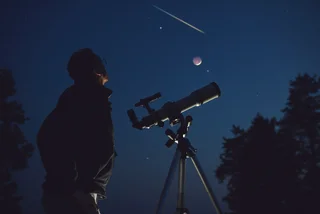A lunar eclipse will be visible from Prague tonight, but most people will hardly notice it. Lunar eclipses can only occur during a full moon. The strawberry moon, as the one in May is called, will pass through the outer edge of the earth’s shadow, but it will miss the much darker central shadow. The moon will be slightly darker than a normal full moon and should take on a dusty orange glow.
Tonight’s event is a penumbral eclipse, as the earth’s outer shadow is called the penumbra.
PARTNER ARTICLE
The more impressive type is the umbral eclipse when you can see a dark spot surrounded by deep red. A partial umbral eclipse will take place on Oct. 28, but for a truly impressive total lunar eclipse, you have to wait until Sept. 7, 2025.
NASA cautions people not to get too excited. “If you don’t know this one is happening, you might miss it. … The moon dims so slightly that it can be difficult to notice,” NASA says on its website.
You can also watch the lunar eclipse online from Italy via the Virtual Telescope Project, which will stream it on their website and YouTube channel.
Tonight’s lunar eclipse will already be underway when the moon rises at 8:28 p.m. in the southeast of the sky. It will reach its maximum at 9:24 p.m., with nearly all of the moon in shadow, and end at 11:04 p.m. As with all nighttime phenomena in the sky, it is more impressive away from city lights but if the sky remains clear, an orange moon should be visible from anywhere that has an unobstructed view of the southeast.
Safe to watch without glasses
Unlike a solar eclipse, it is safe to look at a lunar eclipse without any special glasses. You can also use a telescope or binoculars without any special filters. For taking photos, it is best to use a tripod or some support for the camera and also if you have adjustable settings to underexpose slightly to bring out some more detail.
The next total solar eclipse in Europe is on Aug. 12, 2026. It will only be 86 percent full in Prague but complete in parts of Spain, Iceland, and Greenland. The next total solar eclipse visible from Czechia won’t be until Oct. 7, 2135.












 Reading time: 2 minutes
Reading time: 2 minutes 

























